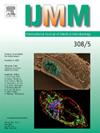Culture-positive COVID-19-associated pulmonary aspergillosis (CAPA) in Germany
IF 3.6
3区 医学
Q1 MICROBIOLOGY
引用次数: 0
Abstract
Background
COVID-19-associated-pulmonary-aspergillosis (CAPA) is a severe superinfection mostly affecting critically ill COVID-19 patients. Early diagnosis and clinical management of CAPA remain major clinical challenges.
Here, we evaluated different approaches to classify culture-positive CAPA at its peak season, assessed incidence and mortality, identified risk factors and analysed clinical and laboratory CAPA-management of three German tertiary care hospitals.
Methods
A retrospective multi-center analysis was performed. Inclusion criteria were SARS-CoV-2-positivity, Aspergillus-culture-positivity of lower respiratory tract specimen and ARDS. Cases were primarily classified according to ECMM/ISHAM-criteria. Species-ID was confirmed by each center. Susceptibility was assessed by EUCAST-microdilution or VIPcheck-screening. Statistical analysis revealed mortality affecting factors.
Results
95 culture-positive CAPA cases were classified as possible (36/95) or probable (59/95) by ECMM/ISHAM; 54 probable cases matched 2 or 3 additional classifications. Incidence rates were higher in ICU (2020/21: 1.56 %/2.13 % non-ICU vs. 5.14 %/6.77 % ICU). A. fumigatus was the most abundant species (93 %; (88/95)). Most patients received steroids to treat COVID-19-ARDS and required respiratory support (steroids: 71 % (67/95); intubated patients 52 % (49/95); ECMO (48 % (46/95)). Retrospective evaluation showed adherence to ECMM/ISHAM antifungal therapy guideline in 71 % (67/95). Case fatality rate was 60 % (57/95). A significant association between GM indices > 3 in respiratory fluid or nicotine abuse (p = 0.035 FE, OR=0.252, 95 % CI=0.066–0.986) and mortality was observed in univariate analysis. Convalescent plasma therapy was significantly associated with mortality reduction in uni- and multivariate analysis (p = 0.020).
Conclusion
Our data reveal regional differences in prevalence, diagnosis, and treatment of culture-positive CAPA in Germany. We could identify new factors affecting survival or mortality.
德国covid -19相关肺曲霉病(CAPA)培养阳性
背景COVID-19相关肺曲霉病(CAPA)是一种严重的重复感染,主要影响COVID-19危重症患者。CAPA的早期诊断和临床管理仍然是临床面临的主要挑战。在这里,我们评估了不同的方法来分类培养阳性的CAPA在其高峰期,评估发病率和死亡率,确定风险因素和分析临床和实验室CAPA管理三家德国三级保健医院。方法采用回顾性多中心分析。纳入标准为sars - cov -2阳性、下呼吸道标本曲菌培养阳性和ARDS。病例主要根据ECMM/ isham标准进行分类。各中心确认物种id。通过eucast微量稀释或vipcheck筛选评估敏感性。统计分析揭示了影响死亡率的因素。结果95例CAPA培养阳性患者ECMM/ISHAM评分为可能(36/95)或可能(59/95);54例可能病例符合2或3种额外分类。ICU的发病率更高(2020/21:1.56 %/2.13 %非ICU vs. 5.14 %/6.77 % ICU)。烟螨种类最多(93 %;88/95)。大多数患者接受类固醇治疗COVID-19-ARDS并需要呼吸支持(类固醇:71% % (67/95);插管患者52 % (49/95);Ecmo(48 %(46/95))。回顾性评价显示71% %(67/95)患者遵守ECMM/ISHAM抗真菌治疗指南。病死率为60 %(57/95)。在单因素分析中,呼吸液或尼古丁滥用的GM指数>; 3与死亡率有显著相关性(p = 0.035 FE, or =0.252, 95 % CI= 0.066-0.986)。单因素和多因素分析显示,恢复期血浆治疗与死亡率降低显著相关(p = 0.020)。结论:我们的数据揭示了德国培养阳性CAPA的患病率、诊断和治疗的地区差异。我们可以发现影响生存或死亡的新因素。
本文章由计算机程序翻译,如有差异,请以英文原文为准。
求助全文
约1分钟内获得全文
求助全文
来源期刊
CiteScore
9.70
自引率
0.00%
发文量
18
审稿时长
45 days
期刊介绍:
Pathogen genome sequencing projects have provided a wealth of data that need to be set in context to pathogenicity and the outcome of infections. In addition, the interplay between a pathogen and its host cell has become increasingly important to understand and interfere with diseases caused by microbial pathogens. IJMM meets these needs by focussing on genome and proteome analyses, studies dealing with the molecular mechanisms of pathogenicity and the evolution of pathogenic agents, the interactions between pathogens and host cells ("cellular microbiology"), and molecular epidemiology. To help the reader keeping up with the rapidly evolving new findings in the field of medical microbiology, IJMM publishes original articles, case studies and topical, state-of-the-art mini-reviews in a well balanced fashion. All articles are strictly peer-reviewed. Important topics are reinforced by 2 special issues per year dedicated to a particular theme. Finally, at irregular intervals, current opinions on recent or future developments in medical microbiology are presented in an editorial section.

 求助内容:
求助内容: 应助结果提醒方式:
应助结果提醒方式:


